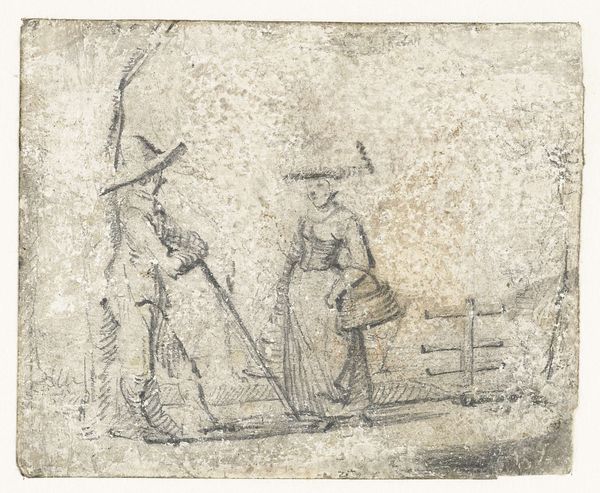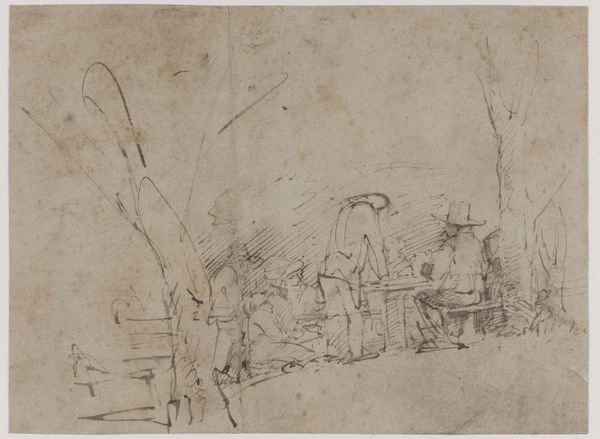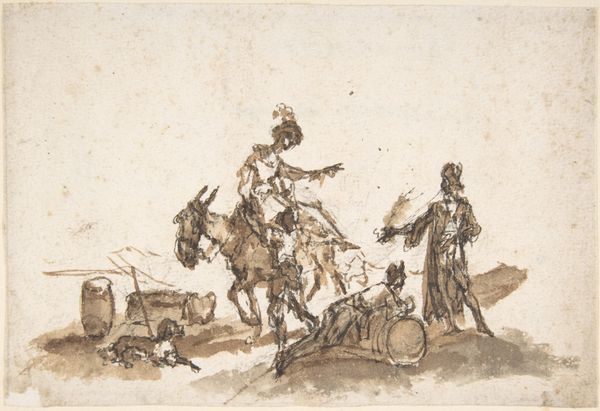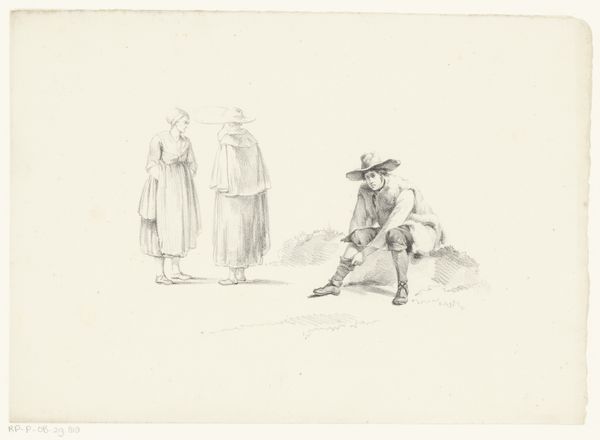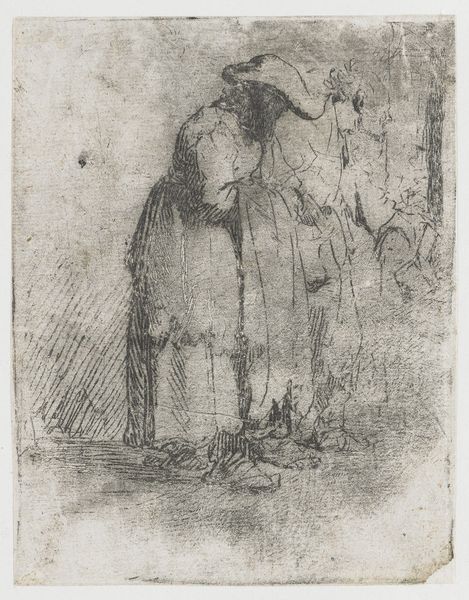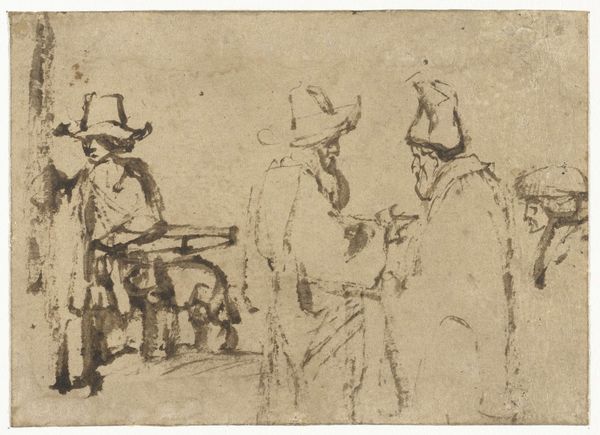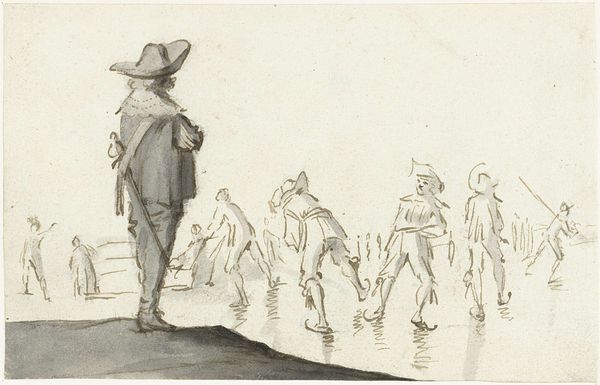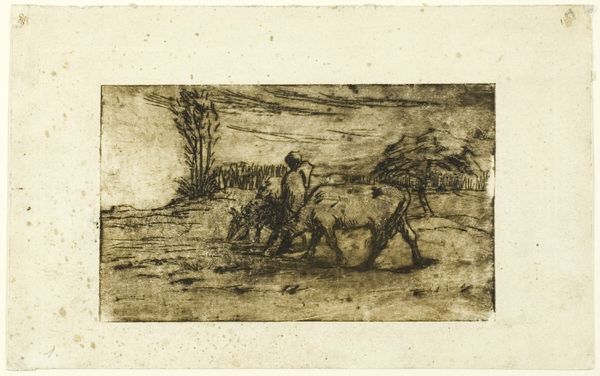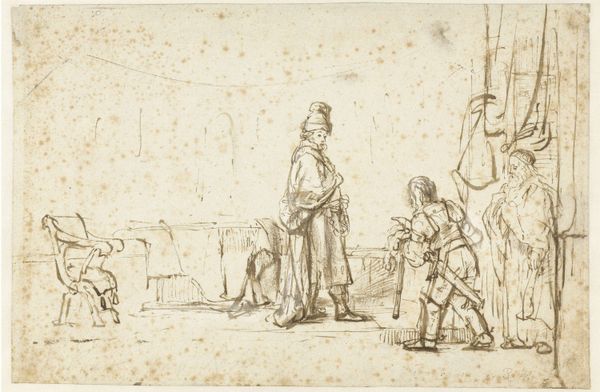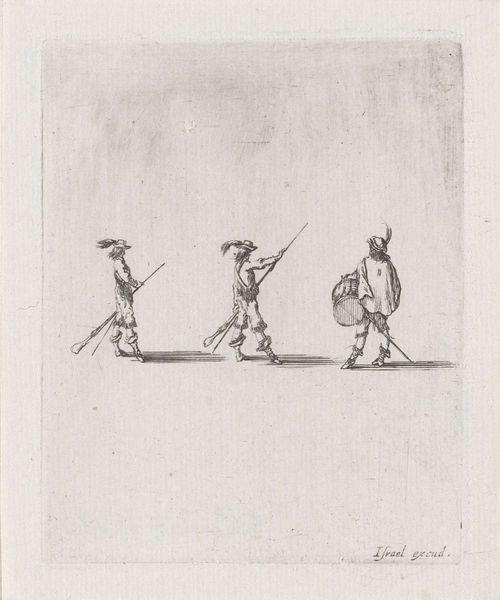
drawing, pencil
#
drawing
#
dutch-golden-age
#
pencil sketch
#
landscape
#
figuration
#
pencil
#
genre-painting
Dimensions: height 117 mm, width 120 mm
Copyright: Rijks Museum: Open Domain
Gerard ter Borch the Younger sketched this drawing of ice skaters, with pen in grey-brown ink, sometime in the 17th century. Here, the skaters are more than just figures on ice; they embody a dance between freedom and control. The act of skating itself is an ancient motif of balance and precarious movement. The 'skate', a device strapped to the foot, transforms the wearer. It allows one to glide across the surface of water, now solidified. This is a symbolic transformation, a connection between worlds. Think of Hermes, the fleet-footed messenger of the gods, whose winged sandals enabled him to traverse realms. Similarly, the skaters here, with their blades, are mediators between earth and frozen water. The winter landscape, often depicted as barren, becomes a playground, a space for communal activity and individual expression. This scene captures a fleeting moment of joy. It reminds us that, like skaters on thin ice, our lives demand a careful balance. A single misstep can lead to a fall. Yet there’s also a sense of liberation. The ability to momentarily defy gravity is exhilarating, a reminder of our human capacity to adapt and find joy even in the face of precariousness.
Comments
No comments
Be the first to comment and join the conversation on the ultimate creative platform.
